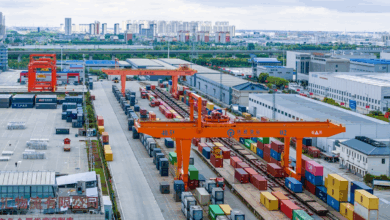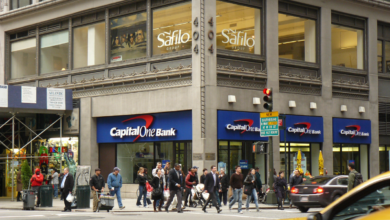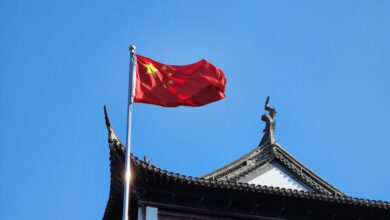Russian Economy Under Pressure: Navigating Sanctions, Inflation, and War Costs
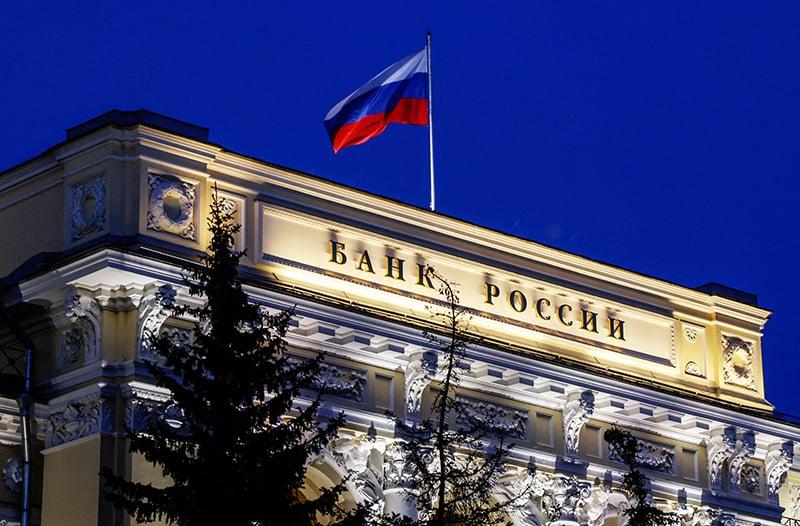
The Russian economy, which initially showcased remarkable resilience following the invasion of Ukraine in 2022, is beginning to buckle under the weight of prolonged conflict, sanctions, and rising domestic pressures. While the Kremlin utilized substantial pre-war reserves and steady revenues from oil and gas exports to stave off economic collapse, the effects of these strategies are wearing thin. Three years into the war, Russia’s economic trajectory faces growing uncertainty, with potential recessions, dwindling labor markets, and geopolitical challenges looming large.
The Early Years of Resilience
In March 2022, U.S. President Joe Biden declared that Western sanctions were turning the Russian ruble into “rubble,” predicting that the economy would be “cut in half.” Initially, this prognosis seemed plausible as Russia’s GDP shrank by 2.1% in 2022. However, the economy rebounded with 3.6% growth in 2023, and projections for 2024 estimate an impressive 3.8% growth. The Kremlin ridiculed Biden’s statements as Western wishful thinking, pointing to these numbers as evidence of economic stability.
This resilience was underpinned by three critical factors:
- Deep Pre-War Reserves: Russia’s significant financial reserves allowed the government to sustain key industries and stabilize the currency.
- Stable Energy Revenues: Oil and gas exports provided essential hard currency, despite sanctions and discounted sales to non-Western markets.
- Limited Civilian Impact: Policies to shield the broader population from war-related economic disruptions helped maintain domestic stability.
However, as the war drags on, all three pillars of resilience are showing signs of strain.
Inflationary Pressures and Recession Risks
Russia’s Central Bank is grappling with runaway inflation, which threatens to spiral out of control if left unchecked. To curb inflation, policymakers have raised the key interest rate to 25%, a level not seen in decades. While this move is designed to cool demand and stabilize prices, it also slows economic growth and increases borrowing costs for businesses.
Economists predict that Russia’s GDP growth will decelerate sharply in 2025. A Central Bank survey forecasts a modest growth rate of 1.5%, while the International Monetary Fund (IMF) projects just 1.3%. Some experts, including Yevgeny Nadorshin, chief economist at PF Capital consultancy, warn of a possible mild recession, marked by two consecutive quarters of negative GDP growth.
“The Russian economy is unlikely to develop significantly under these conditions,” Nadorshin told Kommersant. “The recession will likely address inflationary pressures, but it comes at the cost of overall economic vitality.”
Alexander Isakov, Bloomberg’s chief economist for Russia, agrees that prioritizing inflation control over growth increases the risk of a downturn. According to Isakov, “The Central Bank faces a difficult choice: tighten monetary policy further to tame inflation or accept heightened inflationary pressures. Current indicators suggest they will continue with the former.”
Labor Market Struggles and the End of Wage Growth
Russia’s labor market has mirrored trends seen in other wartime economies, with defense-related spending fueling demand in certain sectors. Despite inflation, wage growth in recent years outpaced price increases, as employers offered higher salaries to attract workers in a tight labor market. However, this “wage miracle” appears to be ending.
Real wage growth, which reached 8% in 2024, is projected to drop to 3.1% by 2025, according to Central Bank surveys. Companies burdened with rising debt costs due to high interest rates are expected to reduce wage increases or freeze salaries entirely.
“If a company has significant debt, it will prioritize servicing those obligations over raising wages,” analyst Yelena Kiselyova explained. “This will likely limit wage growth, even in industries outside the defense sector.”
The labor market’s tightness is also under threat from potential disruptions caused by forced military mobilization, which could remove hundreds of thousands of workers from the civilian economy.
Read More:
- Could This Holiday Season Make You a Billionaire? The Mega Millions Jackpot Reaches a Record $1.15 Billion
- Party City Shutters Operations After Four Decades
- Amazon Workers Strike Across Multiple Sites Amid Union Push for Labor Contract
The Shadow of Mobilization
Russia’s military operations in Ukraine have relied on contract soldiers enticed by high salaries and bonuses. However, the prospect of a second wave of forced mobilization—similar to the one in late 2022—looms large. Reports suggest that Russia’s military leadership has already urged President Vladimir Putin to conduct another round of mobilization to sustain operations.
Mobilization would extract fighting-age men from critical industries such as agriculture and manufacturing, exacerbating labor shortages. The first mobilization in 2022 led to widespread disruptions, including the departure of young professionals fleeing the draft. A repeat could trigger another wave of emigration and further strain the economy.
Military analyst Michael Kofman predicts that by the second half of 2025, Russia will face acute personnel shortages, forcing policymakers to consider another mobilization or alternative strategies for replenishing forces. “The civilian economy will bear the brunt of these decisions, particularly in sectors already stretched thin,” Kofman noted.
Energy Revenues: A Waning Lifeline
Russia’s energy sector has been a stabilizing force throughout the conflict, with oil and gas revenues accounting for 30% of the national budget. Despite Western sanctions, Russia continues to sell oil at discounted rates to Asian markets. However, this lifeline is facing challenges:
- Moderate Oil Prices: Analysts project oil prices will remain around $70 per barrel in 2025, sufficient for sustaining revenues but inadequate for covering rising war expenditures.
- Gas Transit Losses: The potential termination of Ukrainian gas transit could reduce Russia’s gas exports by 10%, costing $7-8 billion annually.
- Discounting Pressures: Increased sanctions pressure from the U.S. may force Russia to offer even steeper discounts to buyers, further eroding profits.
Energy policy analyst Kirill Rodionov believes that while energy revenues are unlikely to collapse, they will decline incrementally, adding strain to an already stretched budget. “The real challenge lies in maintaining revenue streams at levels sufficient to fund both the economy and the ongoing conflict,” Rodionov explained.
The Ruble’s Gradual Decline
Sanctions and economic pressures have steadily devalued the Russian ruble. Exporters are increasingly retaining foreign currency earnings abroad, limiting the availability of hard currency within the domestic economy. This shortage has contributed to the ruble’s depreciation, with analysts predicting an exchange rate of 110-120 rubles per dollar in 2025.
Finance analyst Pavel Ryabov forecasts a gradual devaluation of the ruble by 12-15% annually. “A combination of inflation, stable import demand, and global dollar strength will continue to weigh on the ruble,” Ryabov noted.
The Central Bank’s survey aligns with these projections, estimating an average exchange rate of 102 rubles per dollar in 2025. Analysts warn that further depreciation could lead to higher import costs, exacerbating inflationary pressures.
Long-Term Structural Challenges
Beyond immediate concerns, Russia’s economy faces significant structural issues:
- Demographic Decline: A shrinking and aging population limits long-term economic growth and productivity. The war has accelerated this trend through casualties, emigration, and reduced birth rates.
- Sanctions Impact: Restrictions on technology imports and foreign investment have hindered modernization efforts, particularly in critical industries like energy and defense.
- Energy Transition: Global moves toward renewable energy sources threaten to reduce demand for Russian oil and gas, further complicating the country’s economic outlook.
Outlook: A Pivotal Year Ahead
As 2025 approaches, the Russian economy stands at a crossroads. Policymakers must navigate a delicate balance between controlling inflation, sustaining growth, and funding the war effort. The strategies that sustained resilience in the early years of the conflict—financial reserves, energy revenues, and shielding civilians—are increasingly untenable.
With recession risks rising, labor market disruptions looming, and energy revenues under pressure, Russia faces a year of tough choices. How the Kremlin responds to these challenges will determine whether the economy can stabilize or spiral into deeper crisis. One thing is clear: the coming year will be a critical test for Russia’s economic endurance in the face of mounting wartime pressures.

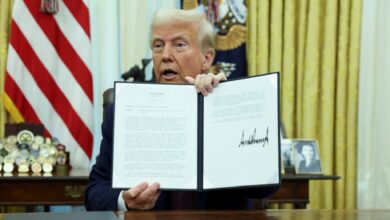

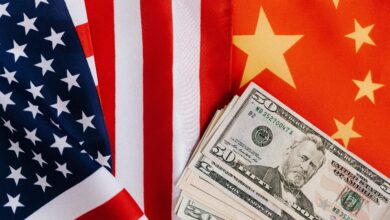
![Xi Jinping meets Cambodia’s PM Hun Manet at Peace Palace, Phnom Penh – April 17, 2025 [AKP/Reuters]](https://theworldseye.com/wp-content/uploads/2025/04/2025-04-17T120007Z_1791565247_RC2NZDAP58BL_RTRMADP_3_CHINA-SOUTHEAST-ASIA-CAMBODIA-1744896414-390x220.jpg)

